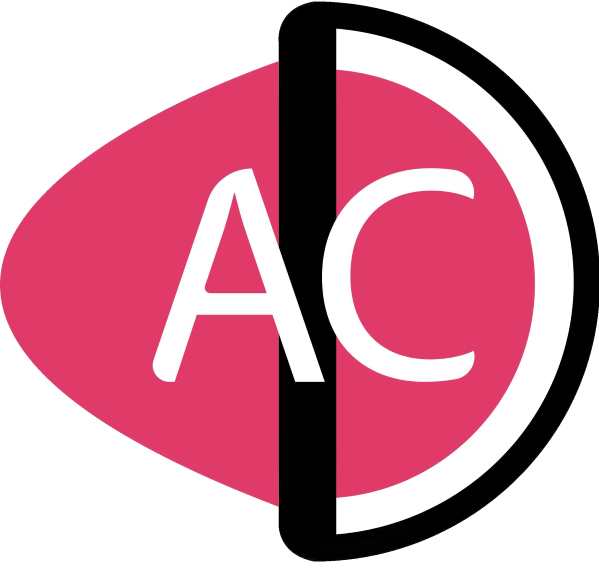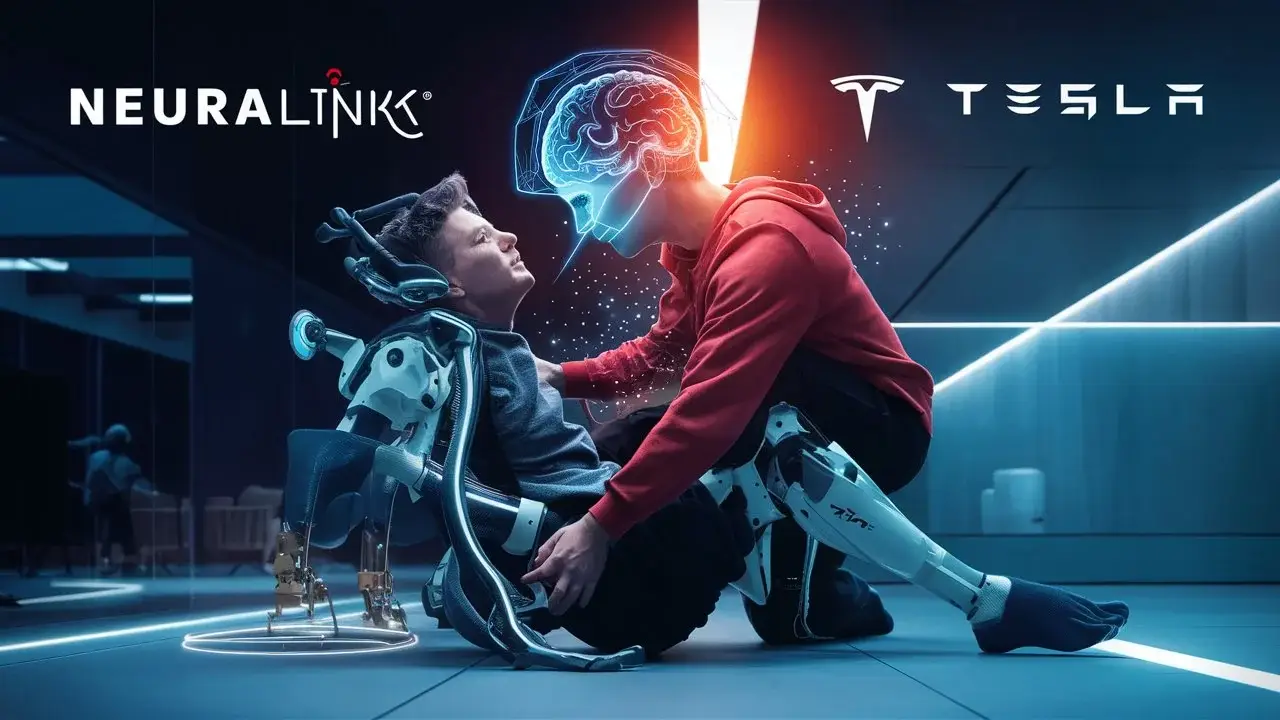Imagine a society where people with severe disabilities can regain control. They just need the basic ability to think and act. Neuralink’s aim is centered around this futuristic vision.
Elon Musk launched Neuralink, The goal is to merge AI with the human brain. This will produce medical and other innovations and surprising story has surfaced.
James Arbaugh, a paralyzed patient, got a Neuralink implant. He voiced his wish for a mind-controlled Tesla robot assistant. This essay explores the potential and goals of this innovative invention. It does so by diving into the unique mix of Neuralink technology and Tesla robotics.
What is Neuralink?
The neurotechnology company Neuralink creates implantable brain-machine interfaces (BMIs).
The main goal is to improve human abilities and treat brain disorders, This will be done by making a direct link between the brain and external technologies.
How does the brain function with Neuralink?
Neuralink’s technology uses microscopic electrodes. They are thinner than human hair and implanted directly into the brain.
These electrodes can both stimulate and record brain activity. The implant uses wireless communication. It is like people use computers.
They can also use artificial legs and other devices. They can do this with just their thoughts.
Who was the first patient of Neuralink in humans?
An important turning point in Neuralink’s history was the first human patient it had. This person had surgery to get a brain implant. This opens the door for more uses and advances in technology. That is Noland Arbaugh
Noland Arbaugh Neuralink Paralyzed Patient.
In January 2023, someone gave the Neuralink chip to paraplegic James Arbaugh. His tale serves as evidence of Neuralink’s capacity for transformation. The implant has given him new hope.
It has also given him new options despite his physical limitations. Arbaugh receives its Neuralink Chip for his trip. The Neuralink chip was put in Arbaugh’s brain. This marked the start of his adventure.
Despite its complexity, this process was an important first step. It was the start of the investigation. It was about how Neuralink’s technology can help people with severe disabilities.
Life After the Implant.
Following implantation, Arbaugh’s capacity for social interaction saw a significant change. The Neuralink chip let him talk better and use digital gadgets. It greatly improved his life.
Arbaugh has bigger plans for the future than he can handle right now. “I’d be so cool if I had an Optimus robot. I could control it and it would do everything for me. It would be a caretaker,” Arbaugh told Wired, according to Futurism. The dream highlights the potential synergy between Neuralink and Tesla’s robots.
Idea of robots is directed by thought.
Mind-controlled technology uses the brain’s neuronal activity. It uses this activity to control gadgets. Signals go through the Neuralink implant.
It can use it to manipulate external gadgets. Brain impulses go from the Neuralink implant to a computer interface. The interface converts them into instructions for robots.
The Optimus Robot by Tesla’s
The humanoid robot is from Tesla. People call it the Tesla Bot. It’s made to help with many chores. Elon Musk revailed It aims to improve human productivity and safety. It does this by handling mental, hazardous, and repetitive jobs.
Features and Compatibility of Neuralink
Optimus has powerful artificial intelligence. It also has sensors and actuators. They let it travel and interact with the real world. It’s meant to provide companionship and help with home chores. It’s also meant to carry goods.
Possibility of Neuralink Integration
Neuralink’s link with Optimus could change how disabled people interact. It will change how they interact with their environment. It could change how they interact. Users like Arbaugh may get a helper that could do many tasks. It could care for them and help them move. They can control it with their thoughts to manage Optimus.
Release Date of Neuralink
It’s anticipated that Neuralink will go on sale in 2025. This timeline marks a critical turning point. It was to increase access to cutting-edge neurotechnology.
Possible effects on the lives of people with disabilities.
Neuralink’s tech and Tesla’s robots could change the lives of disabled people. This technology might provide a better life. It could bring more mobility and independence. These are just a few of its advantages.
They will seamlessly merge the human brain with modern robots. This mix could raise productivity and well-being. It enables rare levels of human-machine collaboration.
Significant ethical concerns are brought up by the development of mind-controlled robots. Concerns like the possibility of abuse, and the effect on employment.
For mind-controlled technology to be widely used, social approval is essential. Gaining acceptance and confidence will depend on educating the public. It will also depend on addressing worries about security, privacy, and moral use.
Resolving Security and Privacy Issues
Brain-computer interaction privacy and security are serious problems. Maintaining user trust and safety requires ensuring that user data is safe. It also requires keeping technology safe from hackers and illegal use.
Technical Difficulties
Many technical obstacles block making reliable brain-machine interfaces. They’re effective. Researchers are still developing the implants. They want to ensure that signals transmit well.
They also want to ensure that the implants are not invasive. They also want to ensure that they have long-term stability.
Obtaining regulatory approval presents another major obstacle. To release and use Neuralink, we must meet strict safety and effectiveness rules.
Overcoming Doubt in the Public Eye
Public anxiety and skepticism about new technologies may delay adoption. To overcome these obstacles, we’ve got to have open communication. We also need to prove benefits and reduce risks.
In summary
For people like James Arbaugh, Neuralink offers hope. It does this by giving the ability to overcome limits and gain new independence. Using your thoughts to operate a Tesla Optimus robot isn’t just science fiction. It’s a real possibility that isn’t far off. Neurotechnology and robots, like Neuralink, will be out in 2025. They promise to bring in a new era of human capability and empowerment.
FAQs:
What is Neuralink’s main objective?
Neuralink’s main objective is to develop advanced brain-machine interfaces (BMIs) that can treat neurological conditions and enhance human capabilities by enabling direct communication between the brain and external devices.
How does Neuralink’s technology benefit paralyzed ?
Neuralink’s technology benefits paralyzed by allowing them to control digital devices, communicate more effectively, and potentially interact with robotic assistants, significantly improving their quality of life and independence.
When will NeuraLink be available to the public?
Neuralink is expected to be available for sale in 2025, marking a significant milestone in making advanced neurotechnology accessible to the general public.
What is Tesla’s Optimus robot?
Tesla’s Optimus robot, or Tesla Bot, is a humanoid robot designed to assist with various tasks. It is equipped with advanced AI, sensors, and actuators, enabling it to handle repetitive, hazardous, and mundane tasks, thereby improving human efficiency and safety.
How do mind-controlled robots work?
Mind-controlled robots work by using neural activity from the brain. Through the Neuralink implant, brain signals are transmitted to a computer interface, which then translates these signals into commands for robotic systems, allowing users to control robots with their thoughts

